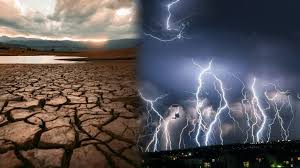El Niño has arrived – with consequences

The El Niño meteorological phenomenon, with consequences for the entire planet by causing extreme weather events, has begun, confirmed the US Oceanic and Atmospheric Administration (NOAA).
It is characterized by the warming of the surface of the equatorial eastern Pacific Ocean and occurs every 2 to 7 years on average.
“Depending on its strength, El Niño can cause a variety of impacts, including increasing the risk of heavy rainfall and drought in some parts of the world,” said NOAA climatologist Michelle L’Heureux, and it could also cause record temperatures.
In May, the World Meteorological Organization (WMO) predicted that the period 2023-2027 would be the hottest ever recorded on Earth, under the combined effect of El Niño and global warming caused by greenhouse gas emissions.
In general, El Niño tends to moderate hurricane activity in the Atlantic, but favors it in the Pacific, according to NOAA.
Australia warned this week that El Niño will increase temperatures in a country already vulnerable to wildfires, while the influence of the phenomenon in the US is weak during the summer, but more pronounced from late autumn to spring, says the NOAA.
Past devastations
The National Geographic magazine highlights the most famous episodes of the El Niño phenomenon. During El Niños episodes of the past, the deluges have been so strong that entire villages have slid down the slopes of mountains. Between 1972 and 1973, ocean temperatures soared off the Peruvian coast, nearly wiping out the country’s essential anchovy fishing industry. During the El Niño phenomenon of 1997-1998, the country suffered more than €3 billion worth of damage to buildings, agricultural land, and other infrastructure. And in 2016, coral bleached across the Pacific, floods ravaged South America, and drought-spurred fires ripped through Australia.
Episodes can last up to a year, although warming tends to be strongest during the Northern Hemisphere fall and winter months: In fact, that moment is the origin of the name: “El Niño” not only refers to the male child but also to the baby Jesus. Fishermen in South America, who have known and described the phenomenon for a long time, called it “El Niño” because some of its most important effects occur around Christmas, and the name stuck.




